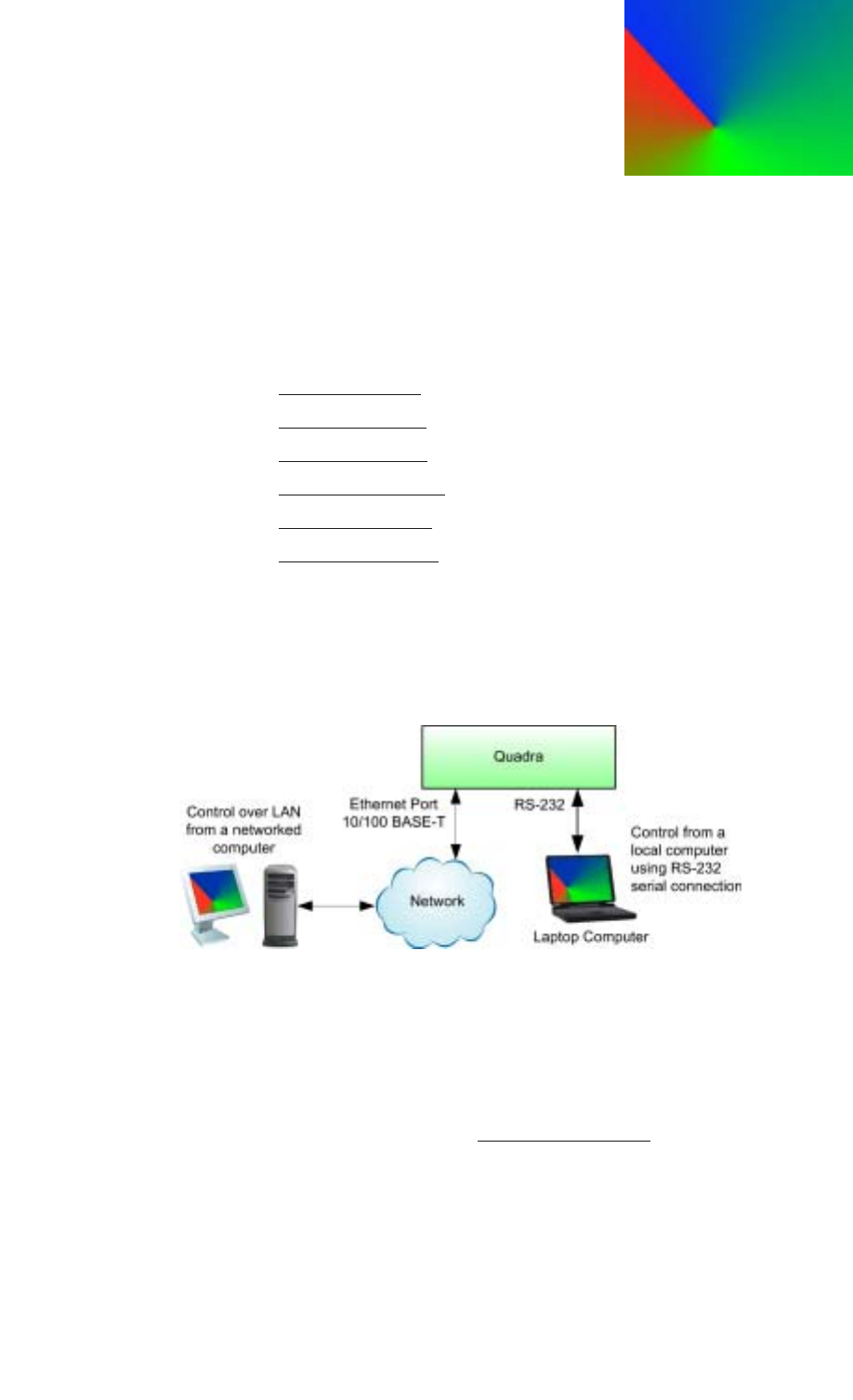Quadra User's Guide
Table Of Contents
- Table of Contents
- Introduction
- Installation and Setup
- Operations
- In This Chapter
- Introduction to Operations
- Setting Output Format
- Testing Outputs
- Selecting an Input Source
- Enabling and Disabling Outputs
- Understanding Auto Sync
- Cropping an Image
- Zooming an Image
- Panning an Image
- Sizing the Output Image
- Using Position
- Adjusting Brightness and Contrast
- Adjusting Hue and Saturation
- Adjusting Sharpness
- Creating a Background
- Creating a 2x2 Monitor Wall
- Command Line Interface
- Image Concepts
- Communications Setup
- Connector Types
- Firmware Upgrades and Troubleshooting
- Technical Specifications

350-7951 Quadra User’s Guide 52
4
. . . . . . . . . . . . . . . . . . . . . . . . . . . . . . . . . .
COMMAND LINE INTERFACE
This chapter discusses Quadra control commands that provide access to all of
the unit’s functions. The following topics are discussed:
• Control Overview
• Command Format
• Command Set List
• Command Summary
• Timing Parameters
• Factory Timing List
. . . . . . . . . . . . . . . . . . . . . . . . . . . . .
CONTROL OVERVIEW
Quadra may be controlled externally via RS-232, or via the unit’s Ethernet
10/100BASE-T port, as shown below.
Figure 4-1. Quadra
Control Methods
Quadra’s Command Set provides full system control, and with few exceptions,
all commands can be issued using either the serial port or the Ethernet port
(using a Telnet session). Exceptions are noted in the command descriptions.
Remember that control via Ethernet requires a connection using Quadra’s IP
address. In Chapter 2, refer to the “System Control Setup
” section for
instructions.










